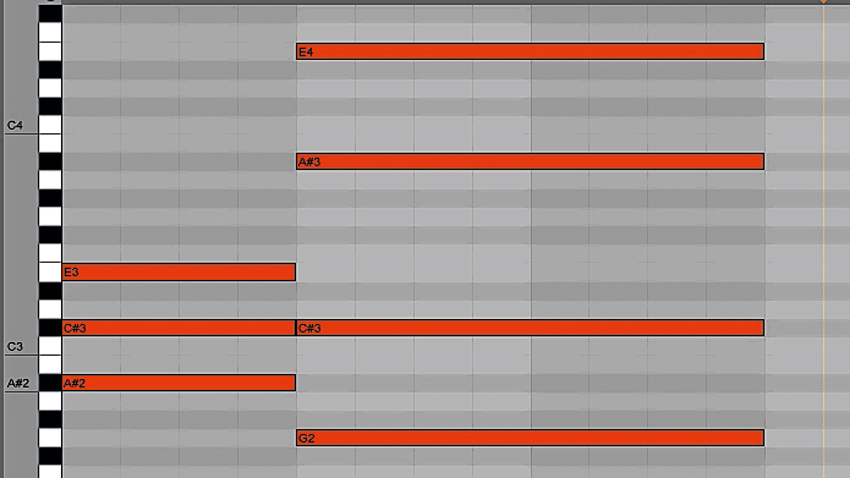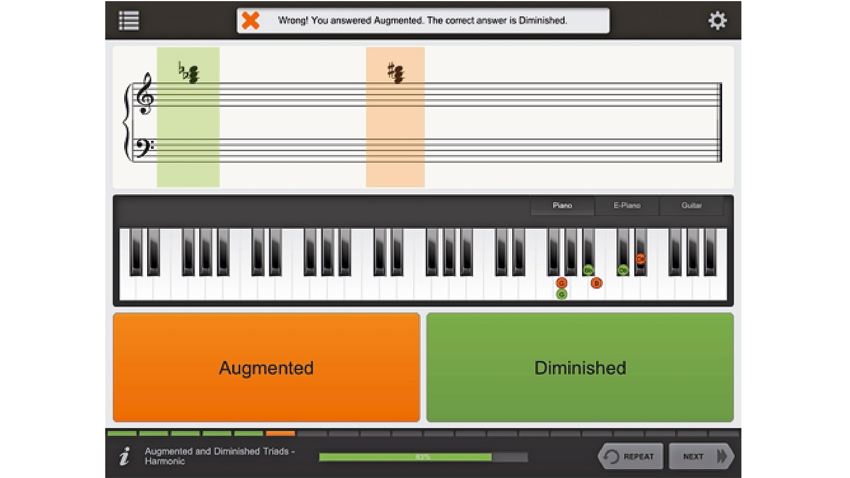12 quick and dirty music theory tips you can use today
Best of 2020: No jargon - just simple techniques
If you want to take your 'untrained' compositions to the next level, the easiest way to do it is by developing a basic knowledge of music theory.
If the thought of studying keys, scales, modes and chord structures fills you with dread, though, don't worry - our quickfire 12-step course will get you up to speed with the fundamentals in no time.
1. Scale up and forget
Scales and keys are simple: instead of creating a track using all of the 12 available notes, you create it using seven. The spaces between the notes are what define the scale, and if every instrument in a track plays only notes from the same set, you should be in key.
The root note is the focal note of the track - D in D major, for example - the one that comes right at the start and end of almost every musical phrase. Start at the root, and move up the keyboard in the spacing 2-2-1-2-2-2-1 to play a major scale. For a minor scale, the spacing is 2-1-2-2-1-2-2.
For example, move up all white keys of the keyboard from C to C and you’re playing the C major scale; go from A to A and you’ll have played the minor scale.

2. Simple stuff with pentatonic scales
Musical scales don’t have to even contain seven notes - perhaps the simplest scale for creating music with is the pentatonic scale.
To define a pentatonic scale, start at any note and move up the keyboard in this note spacing: 2-2-3-2-3. For example, F# pentatonic starts at F# and plays all the black notes. Pentatonic scales are simple but can be extremely compelling.
Want all the hottest music and gear news, reviews, deals, features and more, direct to your inbox? Sign up here.
3. What chords can I use?
Once you’ve chosen a scale, it’s not hard to figure out which chords will go with it, as, again, they'll only be made from the notes of the scale.
A basic ‘triad’ is made of three notes, moving up the scale but skipping a note every time. If you’re in C major (all the white notes on the keyboard from C to C), your first triad will be C-E-G. Start at the note C, miss the note D, play E, miss F, play G.

4. Smooth moves
A sequence of chords will sound best when the notes make fewer huge leaps between them. If there’s a huge difference in height between chords on your piano roll, there’s usually an inversion (see below) you can make to bring all the notes closer together.
In the picture above, the first two chords are in normal position, and the second two are inverted. The second pairing puts the notes of each chord closer together, which makes for a far smoother transition and sound.
5. What about sharps and flats?
Anyone who’s ever sat down at a keyboard will be able to tell you that Db and C# are the same note, but music theory has different ideas.
Music theory’s job is to name things, and the difference is only in the name. These notes are exactly the same, and it’s only for advanced purposes that they’re given different names - even then, they’re the same note, just referred to differently.
Don’t let the theorists’ will to name things discourage you from experimentation.
6. More chords to try
Basic triads are fine, but for a bit more musical sophistication, try adding more notes to them (again, skipping every other scale note) to make sevenths, ninths and elevenths.
Give suspended chords a go, too. These involve taking the middle note of the triad and moving it up or down by one scale note.

7. A sense of tension
A diminished chord comprises three notes separated by a gap of three - eg, F-G#-B. When it comes to ‘standard triads’, they bear more resemblance to minor than major, but with the notes separated by the same gap of three, and the top and bottom separated by a gap of six, diminished chords are especially disturbing and aggravating. For this reason, they’re great to place at the height of tension, potentially best used during a build-up, though sometimes just as good as a connecting chord between two normal triads.
For an even more suspensive combination, try adding another note on the top, again separated by three steps - the diminished seventh.
8. Chord inversions
Inversions are, put simply, the idea of playing a chord with the notes in the ‘wrong order’, so instead of playing D major D-F#-A, you could play it A-D-F#, and still maintain the exact same feeling.
One way to use inversions to good effect is to have the lowest notes match a bassline below.
9. Two ways to change key
Changing the key of your track in the middle is a great way to make things interesting, so what's the best way to do it?
The first and simplest way is to just abruptly change it from one bar to the next, with no warning.
The second way is to introduce the next key just after playing a chord that this key and the current key share. For example, transitioning from G major to A major can be done using the chords Bm (B-D-F#) or D (D-F#-A), as both keys share these notes and chords.

10. A la modes
When you’ve had your fill of standard major/minor scales, try some modes. Remember how C major and A minor were both played using the same notes, just starting at different places? Well, there are five more starting points you can use, and each is known as a mode. It’s unusual to find music played in a mode rather than in a major/minor scale, but this is one way to keep things interesting.
11. Keep it in key
If you’re having trouble keeping to a key, the piano roll might be able to help. In Ableton Live, for example, you can wrap the piano roll to show only the notes that have been programmed into it so far, hiding the others. Add to this the fact that you can also drag notes back to before the first beat, and you can program in the notes of your scale before you start, drag them back behind the first bar, and ‘fold’ the piano roll so that you can only enter acceptable notes.
Many hardware controllers and sequencers allow you to do similar things. NI Maschine, Ableton Push and Novation Circuit, to name three, all feature scale modes that lay only the notes in a specified key out across a grid of pads.

12. Ear training
One of the best ways to get to know and understand the useful parts of music theory is to take a course of ear training. Using websites or apps specially designed for the task, you can test yourself on different note combinations and chords. Pretty soon, through having to think about the combinations of notes presented, you’ll start to absorb the different relative sounds, and back at your DAW, you’ll be able to reach for ‘that note in your head’ a lot faster.
Future Music is the number one magazine for today's producers. Packed with technique and technology we'll help you make great new music. All-access artist interviews, in-depth gear reviews, essential production tutorials and much more. Every marvellous monthly edition features reliable reviews of the latest and greatest hardware and software technology and techniques, unparalleled advice, in-depth interviews, sensational free samples and so much more to improve the experience and outcome of your music-making.
